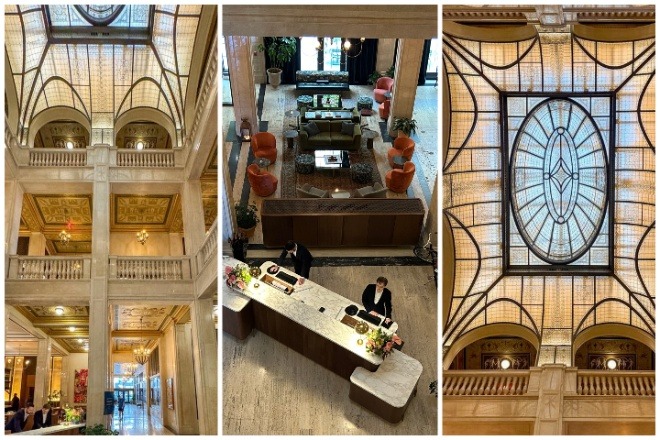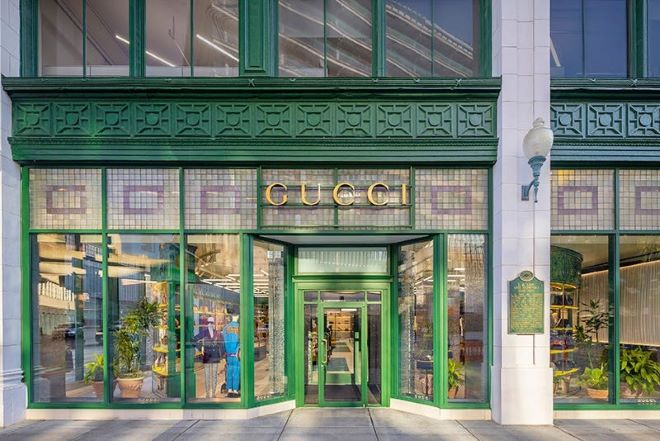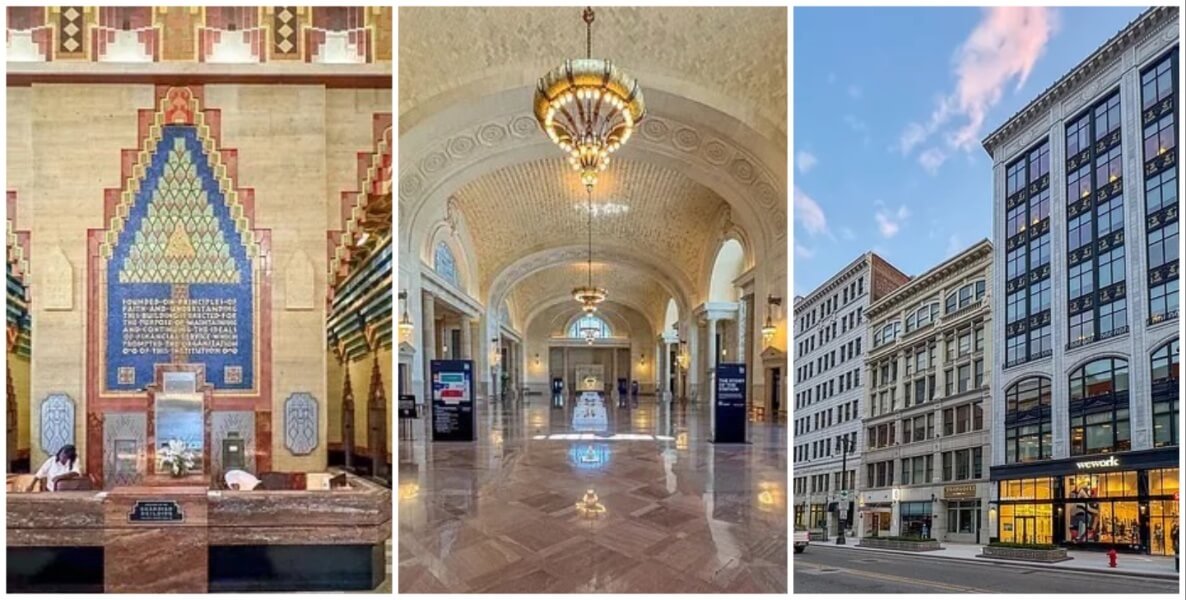I recently took a trip to Detroit with subscribers to my Substack and visited several of the city’s newest developments. I first visited Detroit in 2008 when the downtown was so distressed that I recall not seeing another person walking around, not another soul on its People Mover transit. Now Detroit is experiencing a new era of growth and investment that is transforming its downtown and many adjacent neighborhoods.
The city offers numerous points of inspiration but here are five that may be useful for Philadelphia’s public, private and civic leaders to consider enacting or expanding in Philadelphia.
Detroit takes mixed use to the next level
For our first stop, we checked out the seven-year, $400 million renovation of the Book Tower. The property now exemplifies a trend I saw throughout Detroit: maximized mixed-use. The building is home to five restaurants, office space, an extended stay hotel and rental apartments. Managing this array of uses seems exhausting, but may ultimately be the only way forward for buildings of this size in the future. The Book Tower’s lobby not only serves as a traditional waiting area, but as a bar and restaurant. The amenity spaces for hotel guests also serve the apartment rentals. No square inch is taken for granted.
Maximized mixed use was also on display the next day when we visited The Shepherd, a former church transformed into a mini cultural campus with an art gallery, sculpture garden, skateboard park, boutique hotel, and soon a restaurant and bakery. At first I saw this mix of uses as a way to widen the appeal of any given project, but later I realized that providing multiple uses allows a visitor to deepen their experience, finding more reasons for repeated visits or to lengthen each stay. Detroit shows just how effective — and potentially economically necessary — combining four or five uses into one project can be.
Philly certainly has its fair share of mixed-use buildings with interesting architecture — look at the Bok Building in South Philly, Sherman Mills in East Falls, to name a couple. But other attempts to reinvigorate grand old buildings — the Curtis Building, the Bellevue — haven’t become destinations or resonated with locals. If we want to continue to revive our city’s downtown, we’re going to have to work harder to make interesting and accessible spaces.

Detroit is paving the way for a post-Creative Class city
When I first visited Detroit, I was there to speak at the Creative Cities Summit. Sixteen years ago, we were in the midst of an era when many cities were building museums and launching creative economy programs in the belief this would resuscitate their downtowns. Now, Detroit’s renaissance has certainly benefited from its strong creative economy — for example, Book Tower’s apartments may be filled with med students, but they’re drawn to the building for its beautiful historic preservation, chic amenity spaces, and high-quality restaurants.
But despite the city’s countless creative institutions, from DIA to the Heidelberg Project and many more, Detroit is owning its STEM orientation. Michigan Central, a 30-acre campus that includes the stunning renovation of a long-abandoned train station and reuse of a former public school building into business accelerator Newlab, could have been positioned as a center for arts and creativity. Instead, it is centered on the engineering, technology, manufacturing, and financing of the mobility industry. Newlab sees itself as a pipeline for workforce training and for growing mobility businesses. For example, Grounded, an electric van company started out at Newlab and has already expanded operations to a nearby site.
Michigan has the highest concentration of engineers in the country; the irony is that I learned this tidbit as part of an art exhibit at Michigan Central. But perhaps that just proves my point; here, while the art and design is top-notch, whether it is the public art downtown or the art installations at Michigan Central, it often feels in service of industry, not its own, dominant, creative economy.
In Philadelphia, one need only to look at the University of the Arts fiasco or the Greater Philadelphia Cultural Alliance’s report on a struggling arts sector to see that the city is ambivalent about how much to support the creative economy here. While we have a growing biotech innovation district in University City and in Pennovation, we have yet to truly build the pipeline from Philadelphia’s K-12 schools to start-ups and venture capital the way Detroit has.
Detroit’s history gives purpose to its future
It seems that everywhere you look in Detroit, there’s something under construction, and much of that development is adaptive reuse of historic buildings. The result is an astonishing collage of architecture that is a tonic for the boxy paneled buildings that have blandified most of our cities, including Philadelphia. And because this kind of adaptive reuse work is almost never the easiest, cheapest kind of development, the result is that there’s so much pride in reinventing these spaces.
Each tour guide throughout our trip exuded pride and sense of purpose, so it was no surprise that as we left Michigan Central and passed through a community-oriented Coffee & Conversations session, the representatives who grew up in the area spoke to the importance of seeing the train station transformed from eyesore to community hub. New construction obliterates the past; here Detroiters are having the opportunity to see something that was painful transformed into something beautiful.
Philadelphia has equally gorgeous historic architecture. But it can feel like we take that for granted when we see unique neighborhoods like Jeweler’s Row get demolished, and the preservation and adaptive reuse of many of our historic buildings in North and West Philadelphia stagnate.
Detroit is going for bling
I was surprised a number of times by the ritzy, blingy aspects of Detroit, like the Gucci store downtown, the fact that many restaurants had entrees costing over $50, the $8 pastries at a corner coffee shop. The Hudson Site building, with its bronze decoration reminiscent of Deco architecture, seems intentionally luxurious. The new riverfront park that we visited will feature design by Michael Van Valkenburgh and a building by David Adjaye — famous names in the world of architecture and design. The restoration of Michigan Central, which required reopening a quarry to source the right stone to historically renew the building, was an over-the-top feat.

Detroit does not seem interested in humble bragging about its investment in these places. It’s going for bling, and elevating the level of beauty and craftsmanship in public spaces. So often it feels like our built environment is devoid of decoration, but Detroit really seemed to be going for it in a way that actually felt reminiscent of the historic architecture, like the opulently decorated downtown Fisher Building, from its early 1900s heyday.
It would be nice to see Philadelphia tout its design and fashion a bit more as well, whether that is by ensuring we don’t lose the chic retail we already have like Joan Shepp and Boyds or by encouraging more design architecture, like the big red Schuylkill Yards East building by SHOP Architects and the slender, undulating 2301 JFK Boulevard that are adding a bit of pizzazz to the skyline.
The importance of the long haul
In the 1970s, Detroit Mayor Coleman Young envisioned a river park that spanned the 5 miles between the city’s two main river crossings. That vision is being implemented now, in the mid-2020s, with the latest 22-acre section of park. Michigan Central is implementing a 30-year plan for the area beyond the train station that includes housing and even getting train service back to the train station. Newlab’s businesses are being incubated now so that they flourish over the coming decades. The $400 million invested in Book Tower is going to pay off years from now.
As The Citizen has covered at length, Philadelphia has also been working to improve its riverfront for decades. It’s also been working to undo the wreckage of I-95 and the Vine Street Expressway. And just this past week, the Rail Park announced plans to expand beyond its small one-third mile park into something grander.
Detroit is focusing on the long haul — a refreshing perspective in our get-rich-quick times — as is Philadelphia. While it can be stunning to see a quick transformation of a city, there is something equally impressive in maintaining slow progress over the long term, across different mayoral administrations and changes in leadership in the private sector.
Diana Lind is a writer and urban policy specialist. This article was also published as part of her Substack newsletter, The New Urban Order. Sign up for the newsletter here.
![]() MORE FROM THE NEW URBAN ORDER
MORE FROM THE NEW URBAN ORDER



